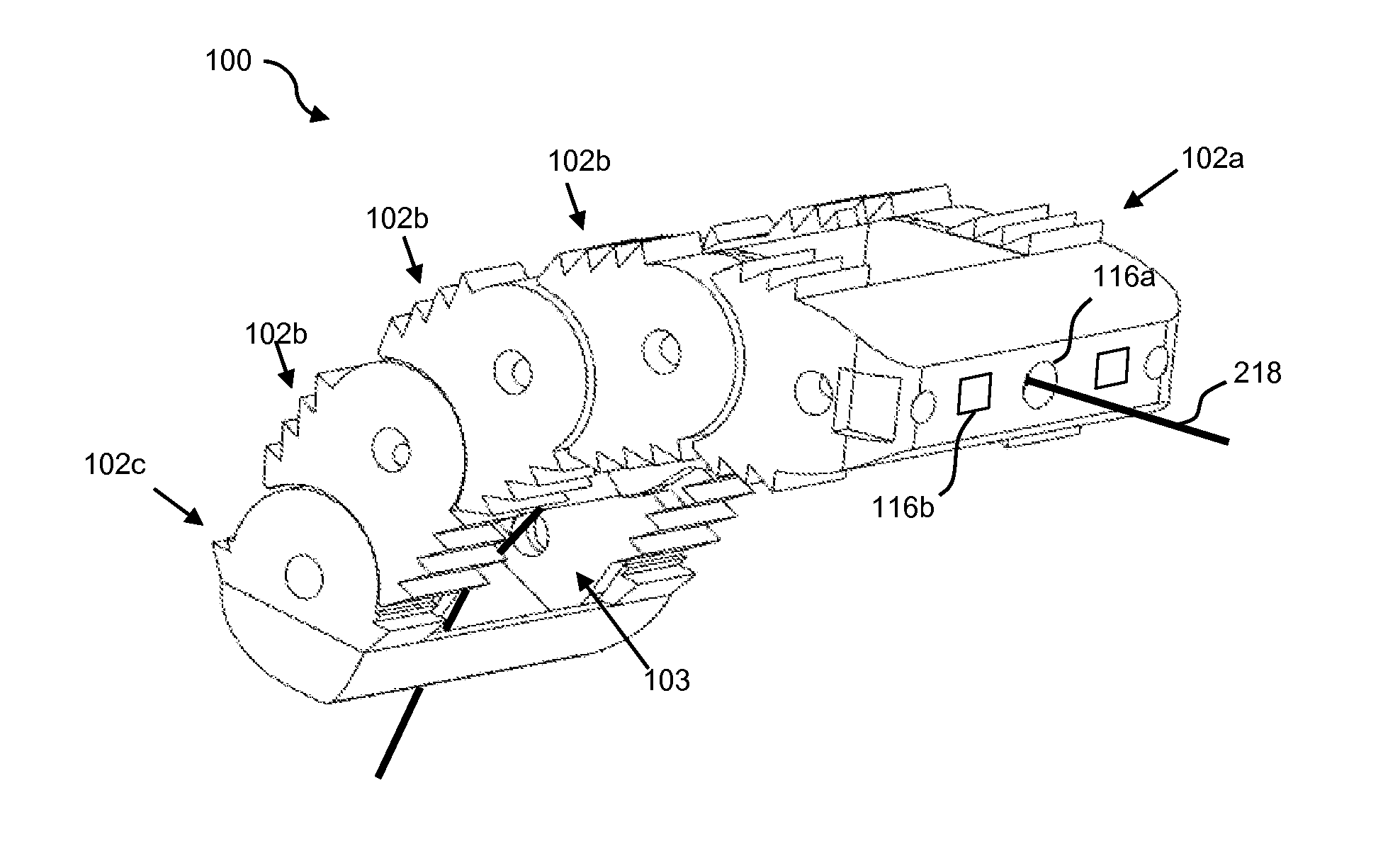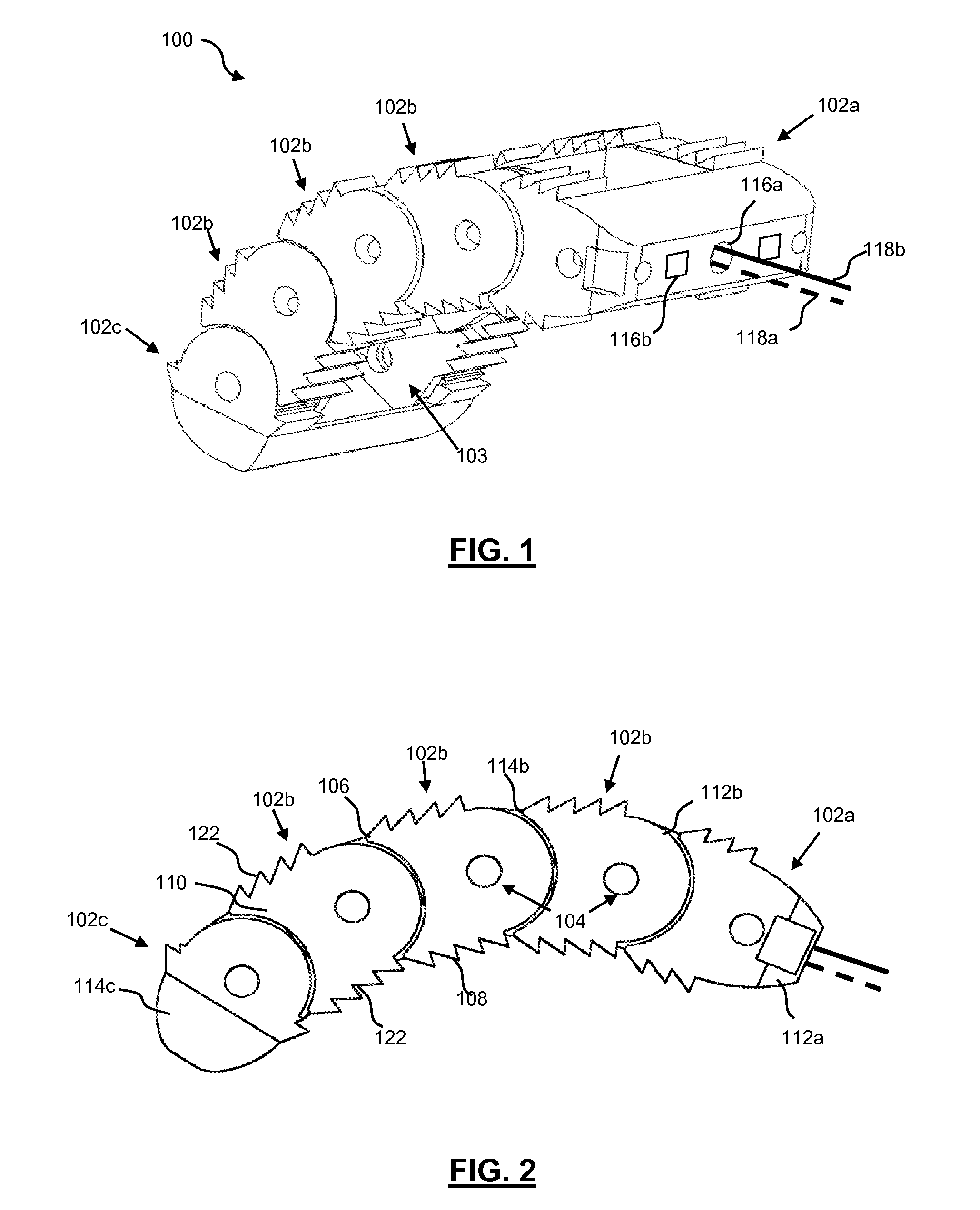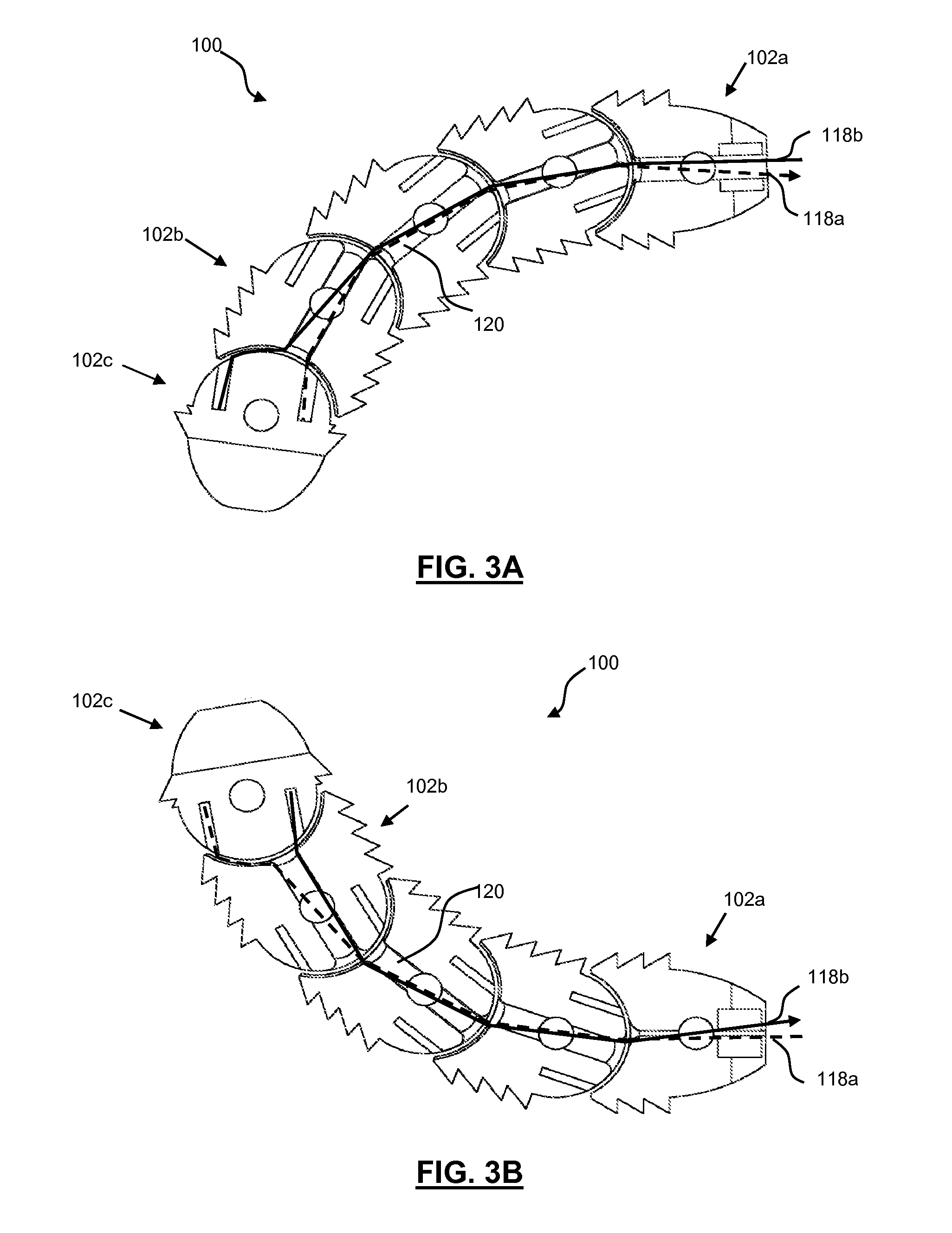Steerable spine implant and system
a spine implant and system technology, applied in the field of spine implants and systems, can solve the problems of difficult direct approach to the spine, situ steering, etc., and achieve the effect of precise placemen
- Summary
- Abstract
- Description
- Claims
- Application Information
AI Technical Summary
Benefits of technology
Problems solved by technology
Method used
Image
Examples
Embodiment Construction
[0021]FIG. 1 is a perspective view and FIG. 2 is a side view showing one embodiment of a steerable spine implant 100 having a number of hinged links 102, including a proximal link 102a, one or more intermediate links 102b, and a distal link 102c. The links 102 are configured to rotatably link together. In some embodiments, proximal and distal end portions of the links have hinge features that interdigitate with each other and are held together with dowel or shear pins 104. This allows each of the links 102 to rotate with respect to each other. A plurality of tension members 118 are coupled to the links 102, such that pulling of the tension members rotates the links either clockwise or counterclockwise to steer the implant 100.
[0022]The implant 100 may be sized for use in many areas of the spine and may have varying height, length, thickness, and / or lordosis angle. In addition, each of the links 102 may have varying height, length, thickness, and / or lordosis angle. Links 102 may be a...
PUM
 Login to View More
Login to View More Abstract
Description
Claims
Application Information
 Login to View More
Login to View More - R&D
- Intellectual Property
- Life Sciences
- Materials
- Tech Scout
- Unparalleled Data Quality
- Higher Quality Content
- 60% Fewer Hallucinations
Browse by: Latest US Patents, China's latest patents, Technical Efficacy Thesaurus, Application Domain, Technology Topic, Popular Technical Reports.
© 2025 PatSnap. All rights reserved.Legal|Privacy policy|Modern Slavery Act Transparency Statement|Sitemap|About US| Contact US: help@patsnap.com



